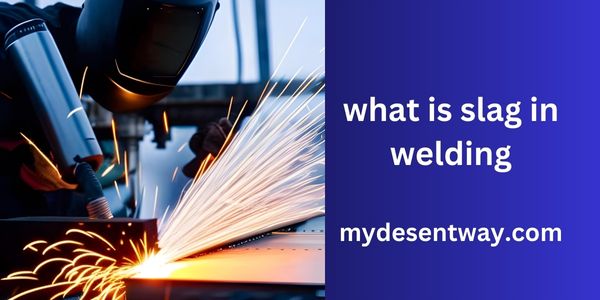Table of Contents
- Understanding Slag in Welding and Its Removal
- What is Welding Slag?
- The Difference Between Slag and Flux in Welding
- Why is Slag Formed in Welding?
- Importance of Slag in Welding
- Does the Slag Need to be Removed?
- How to Remove Slag from Welding?
- The Safety Aspect: Handling Slag Properly
- Tips to Prevent Slag Formation
- 10. Common Issues Related to Slag
- Best Practices for Slag Removal
- Using Flux for Effective Slag Management
- Eco-Friendly Approaches to Slag Disposal
- Conclusion
- FAQs
In the world of welding, numerous byproducts and residues are generated during the process, and one such significant element is welding slag. While some may consider slag an unwanted waste material, understanding its role and effective management is crucial for high-quality welding results.
In this article, we delve into the details of what welding slag is, its importance, and the best practices for its removal.
Understanding Slag in Welding and Its Removal
Slag in welding refers to the hard layer formed on a weld due to the presence of non-metallic elements, such as carbon and atmospheric gases, during the welding process. Although it serves a protective purpose during welding, the slag must be removed once the weld is complete.
Formation of Slag
The formation of slag occurs when melted flux and metal combine in the weld pool. As the weld cools, some flux does not evaporate entirely but remains in the weld pool and rises to the surface. While this offers protection to the cooling weld, it eventually solidifies into a hard layer that needs to be chipped away.
The composition of slag can vary depending on the materials used in welding and may also contain atmospheric gases and impurities absorbed during the melting of flux. As it comprises solely non-metallic elements, slag should be removed from the weld.
Advantages of Slag in Welding
Despite the need for removal, slag plays important roles during welding:
- Protection: It shields the weld from atmospheric contamination and oxidation during the welding process.
- Stability: Slag helps maintain the proper shape and position of the weld pool as it cools.
Disadvantages of Slag
If slag fails to rise to the surface during welding, it can cause issues such as small holes and debris, leading to slag weld inclusion, which can be detrimental to the weld’s integrity.
Weld Slag Inclusion and Its Causes
When slag does not rise to the surface, it can result in the presence of non-metallic elements within the weld, making it susceptible to corrosion, porosity, and weakening over time. Common causes of slag inclusion include:
- Flux Quality: Use of low-quality flux or improper adherence to recommended guidelines.
- Welding Technique: The welding process and the experience of the welder.
- Metal Preparation: Insufficient cleaning of the metal before welding.
The only effective solution to correct slag inclusion is to remove the affected portion of the weld and redo it. Experienced welders can minimize the occurrence of slag inclusion by following proper welding practices.
Preventive Measures
To prevent slag inclusion, it is crucial to take the following steps:
- Select the Right Flux-Cored Wire: Ensure the correct type of flux-cored wire is used and that it is utilized at the appropriate temperature.
- Thorough Cleaning: Clean all dust and grease from the metal before starting the welding process, as they can otherwise become part of the weld.
- Welding Angle: Weld at the correct angle to facilitate the proper formation of the weld pool.
- Multi-Pass Welding: Remove slag between each pass to avoid complications and save time in the long run.
Proper Slag Removal
To remove slag effectively from any weld, you will need the following tools:
- Chipping hammer
- Wire brush
- Needle scaler
While chipping away the slag, take care not to damage the weld or leave behind any slag particles. When the weld is performed accurately, the slag should not adhere firmly to the weld, making its removal an easy task. Alternatively, some filler metals come with self-peeling slag for easier removal.
Importance of Removing Slag
Removing slag is crucial for the following reasons:
- Inspection: A layer of slag can obstruct a full inspection of the weld.
- Multi-Pass Welding: In multiple-pass welding, slag removal is necessary between each pass.
- Aesthetics: Removing slag ensures a clean and presentable weld appearance.
What is Welding Slag?
Welding slag is a vitreous, granular material that forms during the welding process. It is composed of flux, impurities, and non-metallic substances that float to the surface as the welding arc melts the base metal and the filler material.
The slag is essential for shielding the weld pool from contaminants and atmospheric gases, ensuring a stable and protected welding environment.
The Difference Between Slag and Flux in Welding
While welding slag and welding flux are related, they serve different purposes. Flux is a chemical agent used in welding to protect the molten metal from oxidation and other impurities.
It is an integral part of the welding electrode or filler wire. On the other hand, welding slag is the residue left behind after the flux has fulfilled its role. Understanding this difference is vital for proper welding process management.
Why is Slag Formed in Welding?
The formation of slag in welding is a natural occurrence due to the chemical reactions between the welding arc and the metal being welded.
As the metal reaches its melting point, the flux initiates a chemical reaction that removes impurities and prevents contamination. The byproduct of this reaction is the welding slag, which accumulates on the surface of the weld.
Importance of Slag in Welding
Welding slag plays a critical role in ensuring the quality and integrity of the weld. It acts as a protective barrier, preventing the weld pool from exposure to the surrounding atmosphere.
The slag also helps to remove unwanted impurities, which, if left untreated, could weaken the weld joint. Additionally, the presence of slag enhances the weld’s appearance by creating smoother and cleaner weld beads.
Does the Slag Need to be Removed?
Yes, slag needs to be removed after welding. While it serves a beneficial purpose during welding, leaving it on the surface can lead to various issues. If the slag is not removed, it may trap moisture and other contaminants, leading to corrosion and reduced weld strength over time. Moreover, excessive slag can hinder inspections, making it difficult to identify potential defects.
How to Remove Slag from Welding?
Proper slag removal is crucial to maintain the weld’s structural integrity. Here are the steps to effectively remove slag from welding:
a. Allow Sufficient Cooling Time
After completing the weld, allow ample time for the weld to cool down. Trying to remove slag too quickly can result in damage to the weld or personal injury.
b. Use the Right Tools
A chipping hammer, wire brush, or slag hammer can be used to remove the slag. The choice of tool depends on the weld type and material.
c. Protective Gear
Wearing appropriate personal protective equipment, such as gloves, goggles, and a face shield, is essential while removing slag to prevent injury.
d. Cleaning the Weld
Clean the weld area thoroughly to remove any residual slag particles and ensure a clean surface.
e. Post-Cleaning Inspection
Inspect the weld joint after slag removal to ensure there are no defects or remaining slag.
The Safety Aspect: Handling Slag Properly
While removing slag, it is crucial to prioritize safety. Molten slag and metal remnants can be extremely hot, and proper handling techniques are essential to avoid burns or other injuries. Always wear the appropriate protective gear and ensure a safe working environment for slag removal tasks.
Tips to Prevent Slag Formation
Minimizing slag formation can lead to improved welding efficiency. Here are some tips to prevent excessive slag:
a. Proper Welding Technique
Maintaining a steady welding arc and controlling heat input can reduce the amount of slag produced.
b. Choosing the Right Flux
Selecting the appropriate flux and base metal for the welding process can optimize slag formation and removal.
c. Welding Speed
Adjusting the welding speed can impact slag formation. Experimenting with different speeds can help find the most suitable setting.
d. Cleaning the Base Metal
Ensuring the base metal is clean and free from contaminants before welding can reduce the amount of slag generated.
10. Common Issues Related to Slag
Inefficient slag management can lead to several issues, including:
a. Reduced Weld Strength
Excessive slag left on the weld surface can lead to corrosion, reducing the weld’s strength and longevity.
b. Weld Porosity
Slag entrapment can cause weld porosity, resulting in weak welds and potential joint failure.
c. Difficulties in Inspection
Thick layers of slag can obstruct visual inspection, making it challenging to detect underlying defects.
Best Practices for Slag Removal
To ensure effective slag removal and high-quality welds, follow these best practices:
a. Be Patient
Allow sufficient time for the weld to cool down before removing the slag.
b. Thorough Cleaning
Clean the weld area thoroughly to remove all slag particles and ensure a clean surface.
c. Avoid Excessive Force
Apply controlled force when removing slag to prevent damaging the weld or the base metal.
d. Inspect the Weld
Conduct a post-cleaning inspection to check for any remaining slag or defects.
Using Flux for Effective Slag Management
Choosing the right flux and using it properly is essential for effective slag management. The right flux not only improves weld quality but also influences the slag’s behavior and ease of removal.
Eco-Friendly Approaches to Slag Disposal
Proper slag disposal is vital to prevent environmental pollution. Recycling or reusing slag can be an eco-friendly approach, reducing waste and conserving resources.
Conclusion
In conclusion, welding slag is a crucial element in the welding process that plays a significant role in weld quality and protection. While it serves a beneficial purpose during welding, its proper removal is equally important to ensure long-lasting and strong weld joints. By understanding the formation, importance, and effective removal of slag, welders can enhance their welding processes and achieve superior results.
FAQs
What is the primary function of welding slag?
The primary function of welding slag is to shield the weld pool from contaminants and atmospheric gases during the welding process.
Can slag affect the appearance of a weld?
Yes, slag can impact the appearance of a weld. Proper slag removal contributes to cleaner and smoother weld beads.
Is slag removal necessary for all welding types?
Yes, slag removal is necessary for all welding types to ensure the weld’s structural integrity and prevent potential defects.
How can I dispose of welding slag in an environmentally friendly manner?
One eco-friendly approach is to consider recycling or reusing the slag, minimizing its impact on the environment.
Where can I learn more about effective welding techniques?
To enhance your welding skills and knowledge, you can consider enrolling in welding courses or seeking guidance from experienced welders.


3 thoughts on “What is Slag in Welding?”